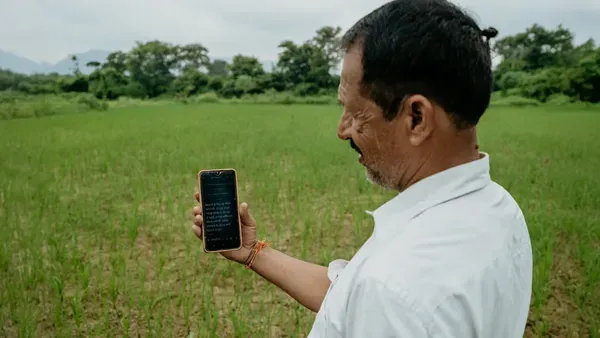Google just proved AI can save lives at massive scale. The company's NeuralGCM weather model reached 38 million Indian farmers this summer with accurate monsoon forecasts delivered via SMS, helping them double their annual income by timing crop planting decisions perfectly. This breakthrough shows how foundational AI research translates into real-world impact for vulnerable communities facing climate uncertainty.
Google's weather AI just reached more farmers than most countries have people. The company's NeuralGCM model delivered monsoon forecasts to 38 million Indian farmers this summer, marking the largest deployment of AI-powered weather prediction for agriculture in history. The results weren't just impressive - they were life-changing. According to University of Chicago research, farmers using these advance forecasts nearly doubled their annual income by timing their planting decisions better. That's not just a tech win; it's an economic transformation for some of the world's most vulnerable communities. The breakthrough came through an unlikely partnership. When Google Research open-sourced NeuralGCM earlier this year, the University of Chicago's Human-Centered Weather Forecasts Initiative immediately saw its potential. They faced a century-old challenge: accurately predicting when India's monsoon season would begin, especially at the local level where individual farmers make critical decisions. Traditional weather models require supercomputers and still struggle with long-term monsoon forecasting. Google's approach was different - NeuralGCM combines physics-based modeling with machine learning trained on decades of historical weather data. The result? A model that runs on a single laptop while delivering accuracy that rivals or beats traditional supercomputer-based forecasts. "Unlike traditional models that rely purely on hard-coded physics, this AI-driven model is trained on decades of historical weather data to infer patterns and learn from past events," Google Research Product Manager Olivia Graham explained in the announcement. The University of Chicago team put NeuralGCM through rigorous testing against other advanced models, including the European Centre for Medium-Range Weather Forecasts' AIFS system. The winner? A blend of NeuralGCM with other AI models and historical data that could predict monsoon onset up to a month in advance. This summer's test proved the model's real-world value when it accurately captured an unusual dry spell that traditional forecasts missed. The deployment itself was a masterclass in scaling AI impact. Working with India's Ministry of Agriculture and Farmers' Welfare, the University of Chicago team delivered tailored forecasts via SMS - the most accessible technology for rural farmers. The messages weren't just weather updates; they were actionable intelligence helping farmers decide when to plant, whether to buy additional seeds, or if they should switch crops entirely. The timing couldn't have been more critical. This summer brought an unusually delayed monsoon season that would have caught farmers off-guard using traditional forecasting methods. Instead, 38 million farmers had advance warning and could adjust their strategies accordingly. The economic impact extends far beyond individual farms. India's agricultural sector employs nearly half the country's workforce, and monsoon timing affects food security for over a billion people. When farmers can optimize their planting decisions, the ripple effects reach global food markets and supply chains. success here builds on years of AI weather research across the tech industry. has invested heavily in climate AI through its AI for Good initiative, while applies machine learning to agricultural supply chains. But none have achieved the direct farmer impact that NeuralGCM partnership delivered. The broader implications for AI development are significant. This project demonstrates how open-sourcing foundational AI models can accelerate real-world applications that traditional tech product development might never reach. By making NeuralGCM freely available, enabled academic researchers to apply it to problems the company might not have prioritized internally. What's next? The University of Chicago team is already exploring applications beyond India's monsoon season. Similar AI weather forecasting could help farmers across Africa, Southeast Asia, and Latin America adapt to increasingly unpredictable climate patterns. is continuing to refine NeuralGCM, with potential applications in disaster preparedness, urban planning, and energy grid management.












